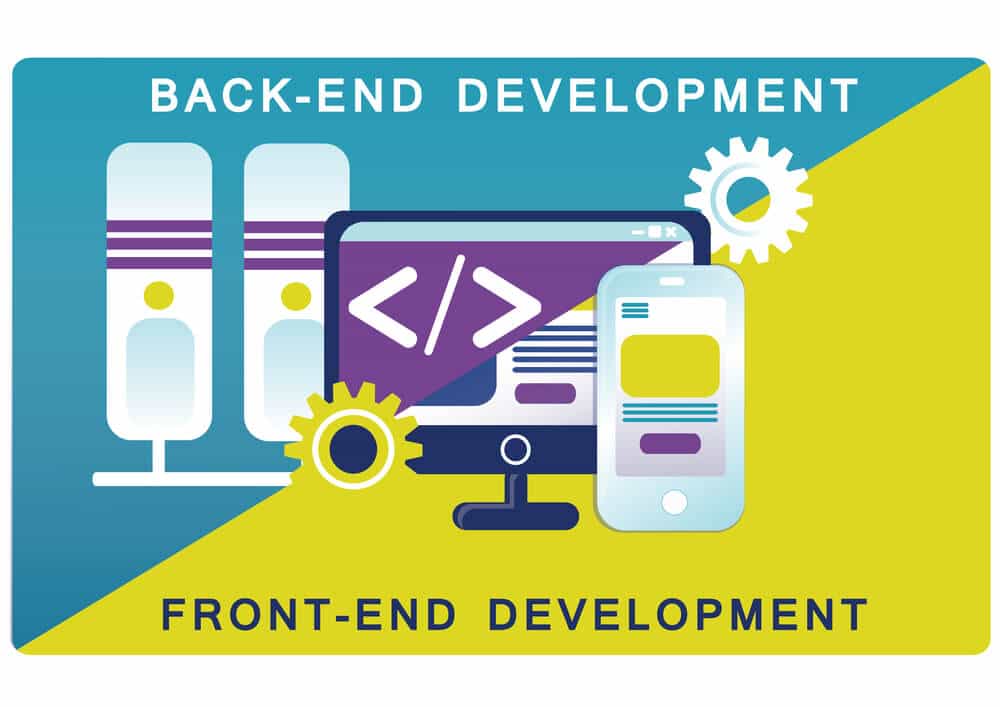Let me try to explain the difference between the front end and the back end, as they say, in a way that even your grandmother would understand. Perhaps the best way to do this is to use an analogy of theater.
Imagine the scene as you see it from the audience. Then the scenery, lighting, various special effects, even actors – everything intended for the spectators’ eyes – we are supposed to call the front end. At the same time, everything that is hidden from the eyes of strangers – the mechanisms that set the curtain in motion, move and change the scenery, regulate the light – turns out the back end of our assimilation. As you can see, both of these parts are inextricably linked and cannot exist apart from each other.
The backstage mechanics provide a stage performance. Without all these devices, the show would not have been possible. But without the stage, the existence of these devices would not make sense. The functioning of these two components is ensured by different people with different sets of skills, knowledge, and experience. The actors usually have no idea which complicated tricks make the sea splash on the stage or a dense forest grow. In their turn, the stage workers do not know how to play, forcing the audience to cry and laugh. But only in the case of their well-coordinated work as a single team, magic appears, for which we, the spectators, pay money.

Now – the same, but in a straight way
Let’s open any site. Here, also, everything is like in a theater. Whatever we see on a page: backgrounds, headers, text, fonts, pictures, multimedia – all these can be combined by one common name – the front end. All this eye-pleasing variety is created using three languages: HTML, CSS, and JavaScript.
- HTML is the basic language in which the content of any page is created, paragraphs are marked up, headings are highlighted, etc.
- CSS allows you to unify the layout of your page. Thanks to the Cascading Style Sheets technology, you do not need to manually set the style of each paragraph and heading – everything is immediately specified using CSS. Therefore, if you need to change the appearance of the entire page, it is enough to make changes in one or two lines of CSS code.
- And finally, JavaScript – this language allows various scripts to be executed on a page without reloading. Sending and receiving messages, processing and transmitting form data, etc. – JavaScript is responsible for all these tasks.
Unlike the front end, the work of the back end, like the activity of the stage workers, is not visible to a user. However, without this part, all the attractions of the designer and coder would remain just pictures and nothing more. After all, right the back end is responsible for connecting the “scene” of any site with the server.
The interaction of these two mechanisms is seamless and absolutely invisible to a user. For example, when you enter a query into a search bar, you are still interacting with the front end. But as soon as you press the Enter key or double-click the mouse, the Back End comes into play. It transmits your request to the server, receives a response there, interprets it, translating it into a language understandable for the user, and returns the data you requested to the search page. Do you see the result? This means you are interacting with the front end again.

The back end uses languages other than the Front end to work. These are Ruby, PHP, Python, Java, and others. In addition, the back end uses database management systems: MySQL, PostgreSQL, SQLite, MongoDB.
It is important to note that this combination – front end and back end – is used not only for writing websites but also for creating mobile and web applications.
Since working with the front end and back end requires knowledge that is very different from each other, as a rule, this is done by separate specialists, or, if we are talking about a large project, separate teams.
Delegate responsible tasks to specialists
Obviously, to coordinate and perform such complex tasks, especially when we are talking about writing a website and software development, enlisting outsourced app developers is the most advisable solution. Today, many companies offer to hire React.js developers or Java programming jobs. Choose the most reliable firm, and your tech partner will provide you with technical support for a startup of any level of complexity.
Outside the topic of this article, we left the analysis of such definitions as the difference between single-page applications and Universal/Isomorphic ones, technical processes, for example, Agile, which are used in the creation of back-end mechanisms. The purpose of this post was to give the most general idea of what the Front End and Back End are. The more in-depth knowledge you may glean from other relevant articles. Or, what is more productive, it makes sense to seek advice from recognized specialists, for example, QArea provides different development services including React.js development services: https://qarea.com/hire-developers/react. You will be offered a full range of services and support for any projects.



